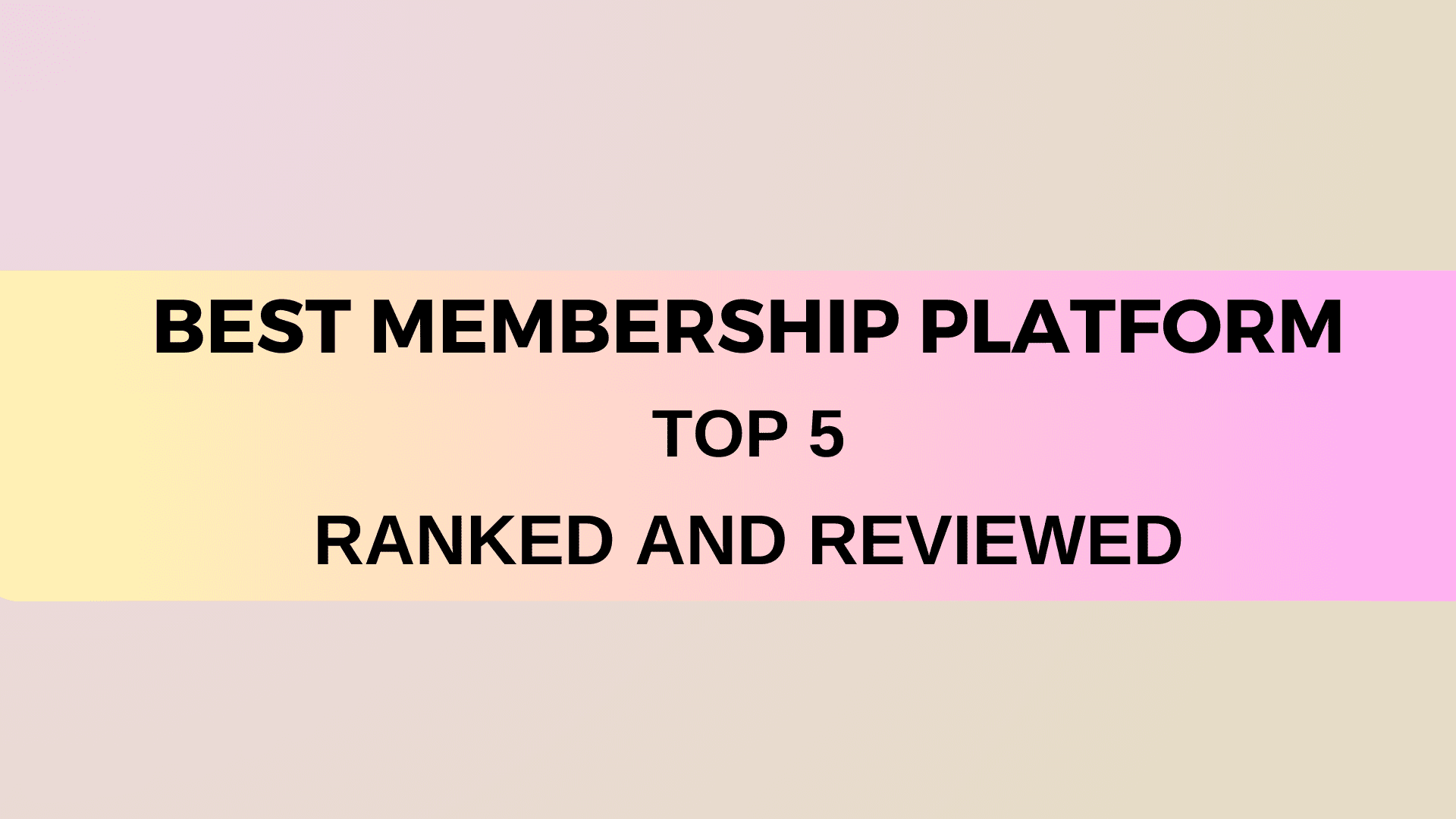Last Updated: October 24, 2023
Do you ever wonder why some people who pay for streaming services, gym memberships, or even software apps cancel their accounts all of a sudden? 😱
Why do they stop using a service that they used to like or find useful?
This is called “membership churn,”, and it’s a huge problem for businesses that depend on subscriptions all over the world.
📚 Why You Should Read This? 📚
Curious about what successful membership churn is? We’ll decode their secrets, explaining how and why they’re used, so you can make the most of them.
We are ready to expose you to everything you wonder about, including all membership related churn. Please keep scrolling!
🔑 Key Points We’ll Explore:
- What is Membership Churn?
- Understanding Membership Churn
- The Difference Between Membership Churn and subscription Churn?
- How to Calculate Churn Rate
- What is a Good Churn Rate for Membership Sites?
- Churn Rate Examples
- 8 Reasons Why Membership Churn is Happening
- 10 Ways to Reduce Customer Churn and Improve Member Retention
- Monitoring and Analyzing Churn Data
- Successful Example of Reducing Membership Churn
📢 Why Membership Churn Matters in Subscription-Based Businesses
Membership churn, which is also called user loss or customer churn, is the number of people who stop subscribing to a business.
This measure is important for almost every business that depends on recurring income.
Why should you care about membership loss if you own a business or are a subscriber?
The answer is simple:
Subscription-based businesses need it to stay alive and grow.
In order to understand how serious this problem is, let’s look at the reasons why people leave, what it means, and what can be done to stop it.
What Is Membership Churn?
First of all, let’s take a deeper look at what membership churn means, right? 👀

Member churn is the rate at which people drop out of a group or stop paying for a membership.
In membership management, it is an important measure to track and look at.
For successful membership growth and sustainability, it is important to understand how retention and churn work and how churn affects subscriptions.
Retention vs churn is a war that organizations fight all the time. Retention focuses on putting plans in place to keep current members interested and happy, with the goal of lowering churn rates.
On the other hand,
Churn is the loss of members, which means that they have chosen to stop paying or being members.
By knowing the differences between loss and retention, organizations can figure out what causes members to leave and come up with ways to keep them from leaving.
In churn vs. retention, businesses must put a higher priority on reducing churn and keeping as many customers as possible.
- This means using personalized communication, giving members useful resources, and giving them access to special benefits to increase their happiness and loyalty.
- To stop members from leaving, it’s also important to look into why they leave and improve the registration process.
- By focusing on both churn and retention, organizations can build a strong base of members and ensure long-term growth and success in handling churn subscriptions.
Understanding Membership Churn
Please allow us to define a few things for you.
That way, we can ensure that you fully understand the concepts of the topic.
What do these things mean? Let’s explore!
Churn Rate: The Heartbeat of Subscription Businesses
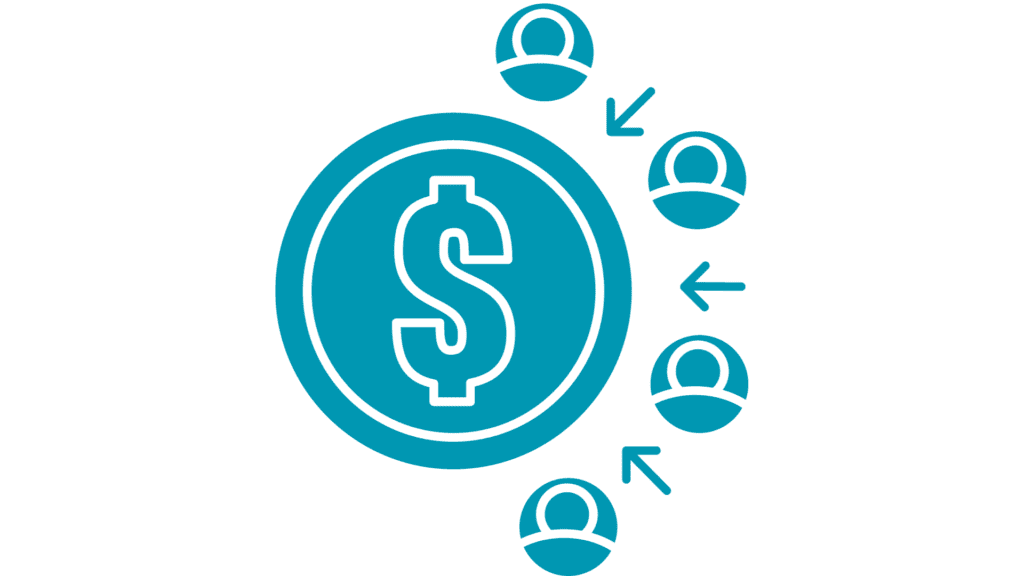
At the core of understanding membership churn lies the concept of the churn rate.
The churn rate is like the heartbeat of a subscription-based business, offering a clear indicator of its overall health.
But what is it, and why is it so significant?
The churn rate is a metric that measures the percentage of subscribers who discontinue their subscriptions within a specified time frame.
Typically, it is calculated monthly, quarterly, or annually, allowing businesses to track and analyze how quickly they’re losing their customer base.
A high churn rate signifies that a substantial portion of customers is leaving, which can be alarming for any business.
🗝️ When people stop using a membership-based service, that’s acceptable. An average subscription site has a 6.7% annual membership churn rate.
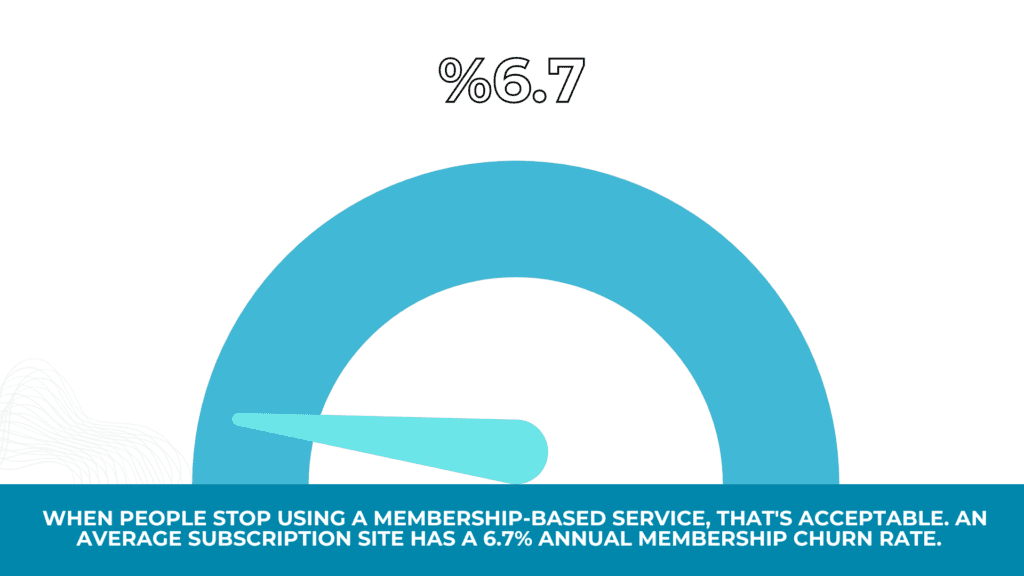
Types of Churn: Voluntary vs. Involuntary
To gain a deeper understanding of membership churn, it’s crucial to differentiate between two primary types:
Voluntary Churn and Involuntary Churn
Voluntary Churn: Voluntary churn occurs when subscribers actively choose to cancel their memberships.
This decision can stem from various factors, such as
- Dissatisfaction with the service
- Financial constraints
- Simple change in personal preferences
Businesses can often influence voluntary churn by improving their offerings, addressing customer concerns, and implementing retention strategies.
Involuntary Churn: Involuntary churn, on the other hand, is the result of circumstances beyond a customer’s control.
These can include
- Credit card expirations
- Payment failures
- System errors
Involuntary churn is typically a problem of operational efficiency and can be mitigated by optimizing payment processes and maintaining up-to-date customer records.
The Impact of Churn on Revenue and Growth
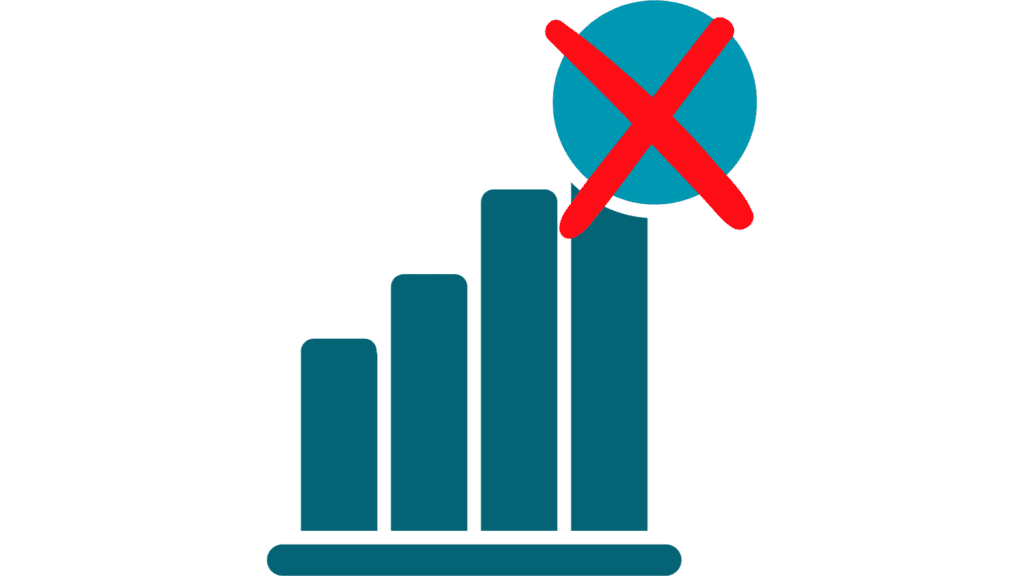
Membership churn isn’t just a metric on a business report; it has tangible effects on a company’s revenue and growth potential.
Revenue Erosion: When subscribers churn, it directly affects a company’s revenue stream. The loss of each customer means the forfeiture of the associated subscription fee, which, when multiplied across a customer base, can lead to significant revenue erosion.
Reduced Growth: High churn rates impede a business’s ability to grow. To achieve sustainable growth, companies must not only acquire new subscribers but also retain existing ones. High churn rates mean that businesses must work harder just to maintain their current subscriber base.
Negative Brand Image: Consistent churn can harm a company’s brand image. Word of mouth can spread quickly, and a reputation for high churn rates may deter potential new customers from subscribing.
The Difference Between Membership Churn & Subscription Churn
It’s important to know the difference between member churn and churn subscriptions.
So, let’s take a look at the differences!
📌 Member churn is the rate at which people drop out of a group or stop paying for a membership. It emphasizes the loss of people who used to be members.
Retention vs Churn is a way to compare the work done to keep members and the rate at which they leave, or churn.
The goal of retention strategies is to cut down on member churn by taking steps to keep members interested, happy, and involved in the group.
On the other hand,
📌 Subscription churn is the rate at which people cancel their contracts with a service or product.
It’s not just for organizations with members; it’s for any company that offers subscription-based services.
Churn vs retention in the context of churn subscriptions is a comparison between the number of subscriptions that are canceled and the work that is done to keep members.
Businesses try to reduce the number of churn subscriptions by improving the value, quality, and general experience of the subscription service.
🚨 Member churn and subscription churn are similar in some ways, but the key difference is in how they are used. 🚨
How to Calculate Churn Rate
By analyzing retention vs churn, businesses can figure out how well their retention strategies work and make choices to decrease churn and improve total member or subscription retention.
Remember that it’s important to know the churn rate if you want to manage memberships or subscriptions well.
It lets companies find trends, make targeted efforts to keep members or subscribers and encourage growth by reducing member or churn subscriptions.
Here’s how you can calculate the churn rate:

Churn Rate = (Member Churn / Starting Member Count) x 100
For example,
If you started with 500 members and lost 50 during a quarterly period:
Churn Rate = (50 / 500) x 100 = 10%
What Is a Good Churn Rate for Membership Sites?
When figuring out what a good churn rate is for membership sites, it is essential to think about the industry, the business model, and the organization’s unique goals.
But in general,
A smaller churn rate is better because it means more members stay and the business will be around for a long time.
In addition to the membership site, one more thing you can do to increase your rates is to use the mobile app.
This can help keep members’ interests alive and prevent you from experiencing membership churn.
Keeping current members is often cheaper than getting new ones, which makes retention a key part of a membership site’s success.
The goal is to find a good mix between keeping members and dealing with the fact that some of them will leave.
Even though there is no one good churn rate, some organizations have averages that can be used as a point of comparison.
For example,
In the subscription-based market, a churn rate of 5–7% per year is often seen as acceptable, and rates that are even lower are very desired.
But it’s important to evaluate churn rates within the same market and take things like price, competition, and the target audience into account when judging performance.
Churn Rate Examples
Big companies don’t clarify member churn or churn subscriptions, but when we look at public information and reports, we can get a good idea of churn rates.
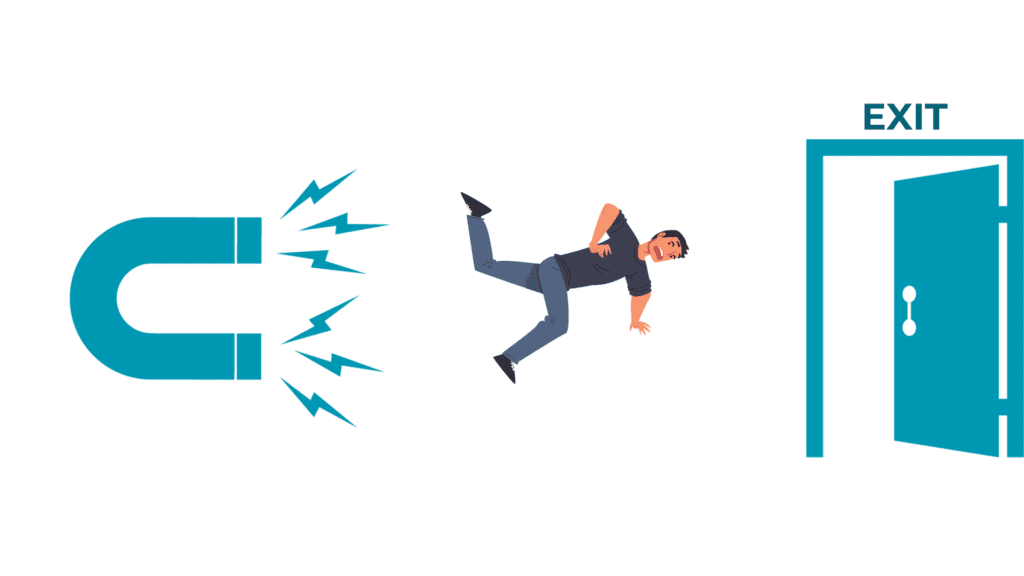
According to estimations by Antenna, around 3.3% of Netflix users in the U.S. left the service in the fourth quarter of 2022.
The number of people who stopped paying for YouTube Premium, which is a paid subscription service, was said to be about 2.3% during the same time period.
In its Q1 2022 report, Spotify said that the number of premium users who stopped paying for the service dropped below 4.7%, which was a record low for the company.
In Q4 2021, Sirius XM said that 1.6% of self-pay subscribers left the service each month.
On the other hand, Hulu said that 6.4% of its members left the company in Q4 2022.
🗝️ Tip: These estimates give an idea of the churn rates of these businesses, but it’s important to keep in mind that churn rates can change based on things like location, time period, and how the competition is doing.
8 Reasons Why Membership Churn is Happening
The rate at which members stop paying for or joining an organization can have a big effect on its growth and stability, which is called, as you know, member churn.
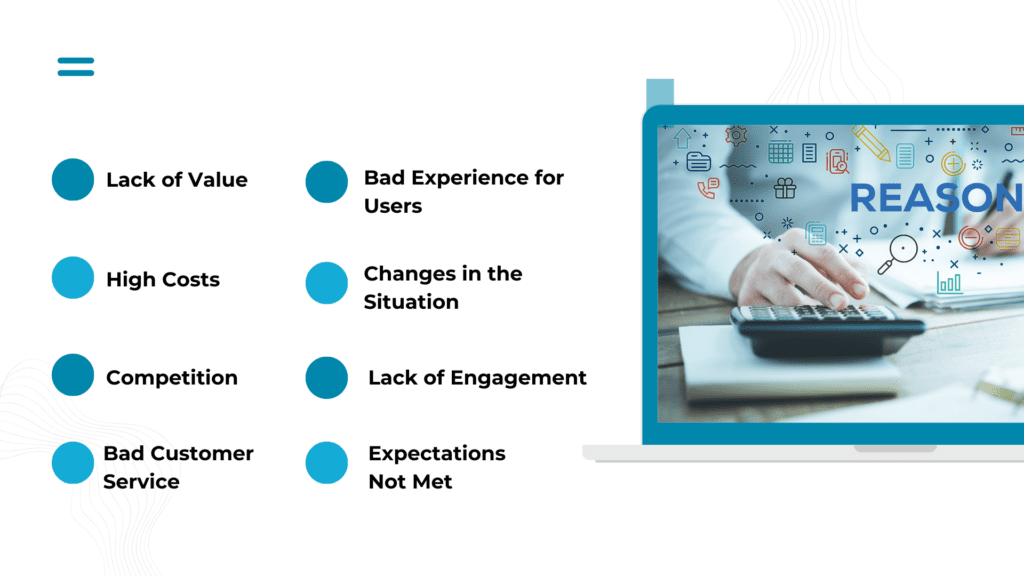
To stop people from leaving and keep more of them, it is important to know why they do.
- Lack of Value
Members can choose to cancel their membership if they don’t think the perks or services are worth it. If they don’t think they’re getting what they paid for or if the company doesn’t meet their standards, they’re more likely to leave.
- Bad Experience for Users
A bad or unclear user experience can make people unhappy and cause them to leave. Members can leave if they have trouble getting to the material, managing the platform, or dealing with technical problems.
- High Costs
If members think the fees are too high or don’t match up with what they get out of the membership, they may choose to cancel their contract and look for cheaper options.
- Changes in the Situation
Life changes in personal situations, like not having enough money, moving, or losing interest in something, can cause people to stop being members.
- Competition
When there are interesting choices on the market, members may look into them and leave if they find a better fit somewhere else.
- Lack of Engagement
Members who don’t participate in the organization or use its services may feel uninvolved and see no reason to stay a member.
- Bad Customer Service
Members can get frustrated with bad or slow customer service, which can make them unhappy. Customers are more likely to leave if they don’t get help when they need it or if problems aren’t fixed.
- Expectations Not Met
When members don’t get what they want in terms of material quality, exclusivity, personalization, or participation in the community, they may get upset and decide to stop being members.
10 Ways to Reduce Customer Churn and Improve Member Retention
- Enhance the Onboarding Process
Create a robust onboarding procedure by providing individualized greetings, detailed guides, and helpful materials. Help new members get the most out of their membership by giving them detailed instructions on how to use the site and its features.
- Provide Consistent Value
It’s important to assess the worth of your membership benefits on a regular basis so you may tweak and enhance them as needed. Make sure your content, services, and rewards are still useful to your members by conducting market research, analyzing member comments, and keeping up with industry developments.
- Make Incentives for Community Engagement
Make it possible for people to meet and talk to other people in the group. Create a social media group or online forum where people can interact, share ideas, and network with one another. Create opportunities for people to meet each other and share information by hosting webinars and conferences, both online and in person.
- Customize Member Experiences
Use analytics and data to learn about your members’ preferences and habits. Make use of this data to customize your communication, content recommendations, and other recommendations for each individual. To make your members feel appreciated and understood, you can send them personalized emails or push notifications depending on their preferences, past purchases, or activity levels.
- Communicate Regularly
Create a system of constant and frequent communication to keep everyone up-to-date and involved. Update your subscribers with news, events, and special content via email newsletters. Use online communities to spread the news about important developments and member achievements.

- Integrate a Feedback Loop
Make it a priority to hear from your members so you can better serve their needs and address their problems. Gather information about member happiness, room for development, and ideas for new services through polls, surveys, and focus groups.
- Membership Loyalty Program
Create a rewards system or membership loyalty program to acknowledge and appreciate your most dedicated customers. Provide members with unique perks like advanced notice of events, priority registration, or exclusive savings offers.
- Fast&Advanced Customer Service
Spend your money on a customer service workforce that is quick to respond and well-informed. When members have problems or inquiries, make sure they get answers quickly. Give customers the option to contact you by phone, chat, or email, and specify how long it should take for you to respond.
- Offer Flexible Membership Options
Understand that everyone in the group has unique wants and needs. Offer varying membership plans, pricing tiers, and extra features to keep your customers happy. Members will have an easier time finding a suitable membership plan if they are able to tailor it to their unique needs.
- Measure and Improve
Keep an eye on the churn rate, member engagement, and member satisfaction on a regular basis. Use analytics software to monitor your members’ online activities, content preferences, and renewal rates. Examine the information to find patterns and weak spots. Apply the learnings to your business practices, make data-driven decisions, and improve the member experience.

Monitoring and Analyzing Churn Data
In the digital age, data is king, and for subscription-based businesses, monitoring and analyzing churn data is a crucial aspect of maintaining a healthy customer base.
Let’s explore!
The Role of Data Analytics

Data analytics is the driving force behind understanding and mitigating membership churn.
By harnessing the power of data, businesses can gain valuable insights into customer behavior, preferences, and churn patterns.
Here’s how data analytics comes into play:
Data Collection: Begin by collecting relevant data, such as customer demographics, subscription history, and usage patterns. This data is the foundation for analyzing churn.
Segmentation: Use data to segment your customer base. This allows you to identify which customer groups are most at risk of churning and tailor retention strategies accordingly.
Predictive Analytics: Utilize predictive analytics to forecast potential churn. By identifying early warning signs, businesses can take proactive measures to prevent customer attrition.
Key Metrics and KPIs for Churn Analysis
Several key metrics and Key Performance Indicators (KPIs) are instrumental in churn analysis:
- Churn Rate: This is the most fundamental metric, indicating the percentage of customers who have unsubscribed during a specific period.
- Customer Lifetime Value: Understanding the CLV helps you assess the long-term value of your customers and justifies investments in retention efforts.
- Churn by Cohort: Analyzing churn by customer cohorts (groups of customers who joined during the same time period) can reveal trends and help you tailor retention strategies to specific groups.
- Churn Reasons: Collect data on why customers churn. Common reasons include price, poor customer service, or lack of perceived value.
- Net Promoter Score: A high NPS generally indicates customer satisfaction, while a low score might signify dissatisfaction and higher churn risk.
Creating Churn Reports

Creating churn reports is vital for summarizing and sharing insights from churn analysis with relevant stakeholders.
Here’s a general outline of what a churn report should include:
- Executive Summary: Provide a concise overview of the current churn situation and its impact on the business.
- Churn Metrics: Present key churn metrics and KPIs, showing trends and changes over time.
- Segmentation Analysis: Break down the churn data by customer segments to highlight specific groups that are more susceptible to churn.
- Churn Causes: Analyze the reasons behind churn, based on customer feedback and data.
- Retention Strategies: Suggest strategies to reduce churn, backed by data and analytics.
- Predictive Insights: If available, offer predictive insights regarding future churn trends and potential areas of concern.
Successful Example of Reducing Membership Churn
One notable example of a successful effort to reduce membership churn is the case of Netflix.
As one of the world’s leading streaming services, Netflix faced intense competition and a persistent challenge in retaining subscribers.
However, their innovative strategies have demonstrated remarkable success in reducing churn.

Here’s a brief overview:
- Continuous Content Investment
Netflix recognized that a significant reason for churn was the lack of fresh and engaging content.
To address this, they heavily invested in producing original content, including popular series like “Stranger Things,” “The Crown,” and “The Witcher.”
This approach not only attracted new subscribers but also retained existing ones by offering a steady stream of captivating content.
- Personalization and Recommendation Algorithms
Netflix uses advanced recommendation algorithms that analyze user viewing habits and preferences to suggest personalized content.
By enhancing the viewing experience and increasing content relevance, subscribers were more likely to stay engaged with the platform.
- Global Expansion
Netflix expanded its services to a global audience, making its content available in over 190 countries.
This move not only increased its subscriber base but also allowed the company to leverage its global presence to diversify content and cater to a broader range of interests and cultural preferences.
- Mobile Optimization
Recognizing the trend of mobile viewing, Netflix optimized its app and website for mobile devices.
This made it more convenient for users to access their favorite shows on the go, which reduced the likelihood of churning due to poor mobile user experience.
- Transparent Pricing
Netflix implemented transparent pricing models with no hidden fees. This approach reduced unexpected charges and confusion among subscribers, improving customer satisfaction and trust.
- Effective Communication
Netflix uses targeted emails to engage subscribers, keeping them informed about upcoming releases, personalized recommendations, and tailored content suggestions. This proactive communication helps keep users engaged and retained.
Last Chapter!
It’s time to part.
We’re just kidding 😂, but we are happy to say that you have come to the end of this post.
We hope you found every detail you were looking for.
Let’s see what we talked about briefly, shall we? ✨
Membership churn is a critical challenge for subscription-based businesses, impacting revenue, growth, and customer satisfaction.
Understanding the churn rate, distinguishing between voluntary and involuntary churn, and employing data analytics to uncover insights are fundamental steps in tackling this issue.
By identifying the reasons behind membership churn and implementing effective retention strategies, businesses can reduce attrition and ensure long-term success.
FAQs about Membership Churn
1-What is Membership Churn?
Membership churn, also known as subscriber attrition or customer churn, is the pace at which streaming platforms, gym memberships, and software programs lose subscribers.
2.-How is Churn Rate Calculated?
Divide the number of customers who canceled during a period by the total number of subscribers at the start of that period to compute the churn rate, commonly given as a percentage. If 50 of 500 customers cancel in a month, the churn rate is 10%.
3-What’s a Good Churn Rate for Membership Sites?
The best turnover rate depends on industry and company type, but lower is preferable. A 6-7% yearly churn rate is typical for subscription sites, while lower rates are preferable.
4-What Causes Membership Churn?
Dissatisfaction with the service, excessive expenses, life changes, competition, a lack of involvement, or missed expectations can cause membership churn.
5-How Can Businesses Reduce Membership Churn?
Onboarding, value, engagement, personalization, communication, feedback, loyalty programs, responsive customer service, flexible options, and measuring and improving strategies can reduce churn.



